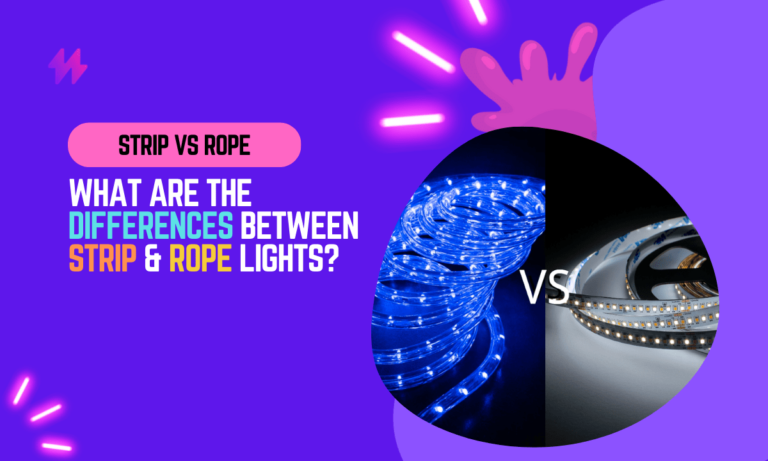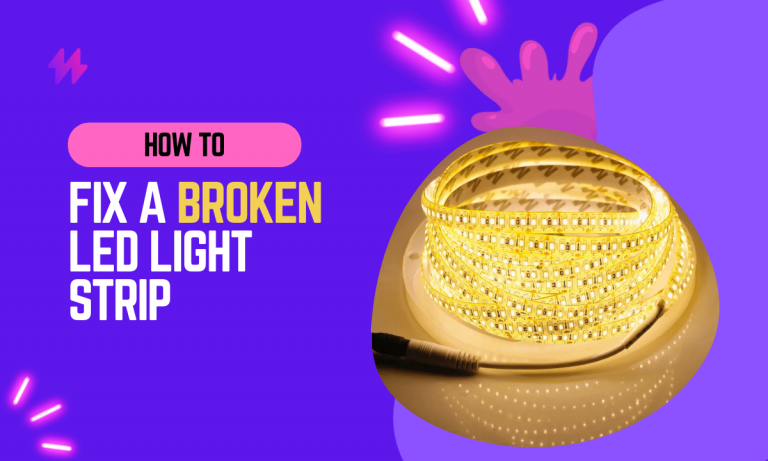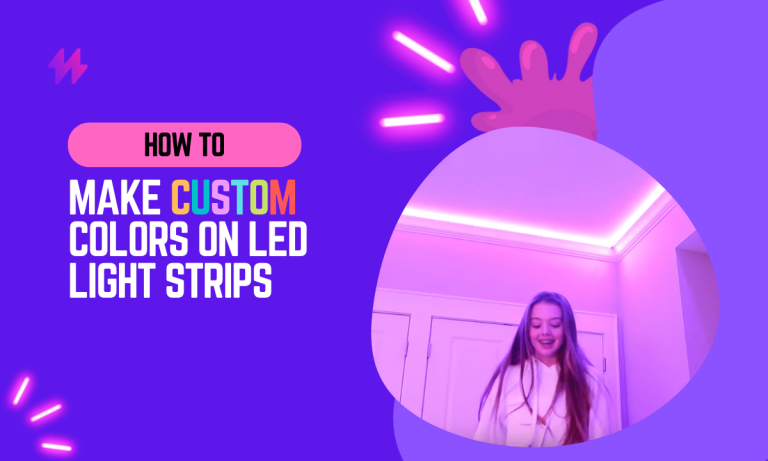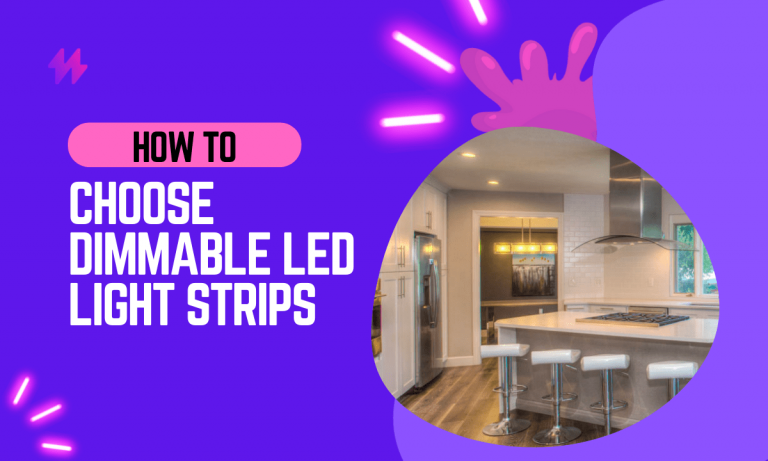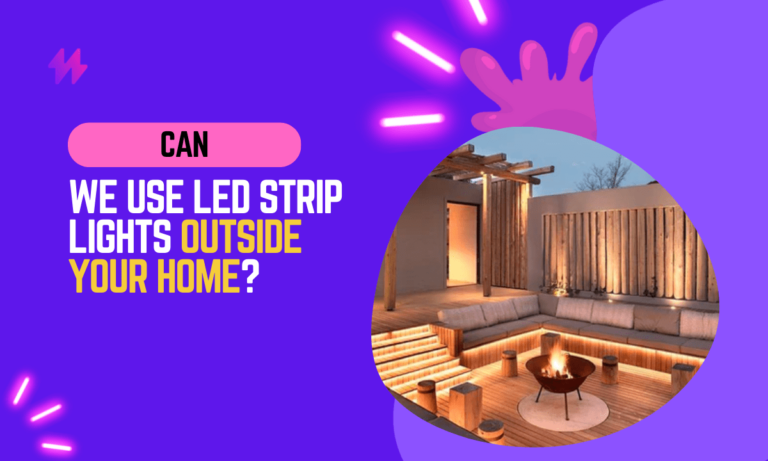Can You Put LED Light Strips on Wood?
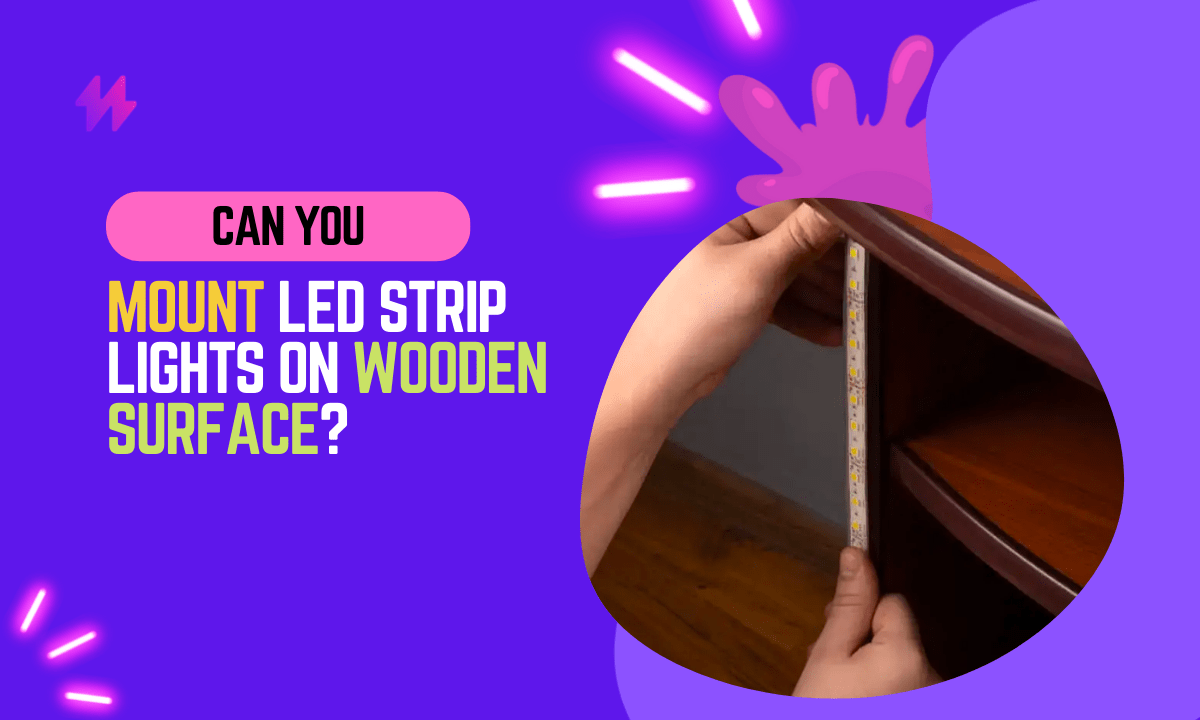
Have you ever thought about adding some extra ambiance to your wood surfaces with LED light strips?
LED strip lights are popular for both commercial and residential spaces due to their aesthetic appeal and durability. They can be seen on the sides of buildings or in showrooms, adding a modern and unique touch to any area.
In this article, we will explore whether can we put led light strips on wood surfaces, including the benefits, preparation, and installation process. So, if you’re considering adding some extra ambiance to your wooden surfaces, keep reading to learn more about how to use LED strip lights on wood properly.
Can You Put LED light strips on wooden surfaces?
Yes, you can put LED strip lights on wooden surfaces, but it’s essential to make sure that the wood surface is smooth and finished if you want them to last for a longer duration. Additionally, you have to use a suitable adhesive to install them on the wood surface, otherwise, light strips will not stick.
Benefits of Using LED light strips on Wood
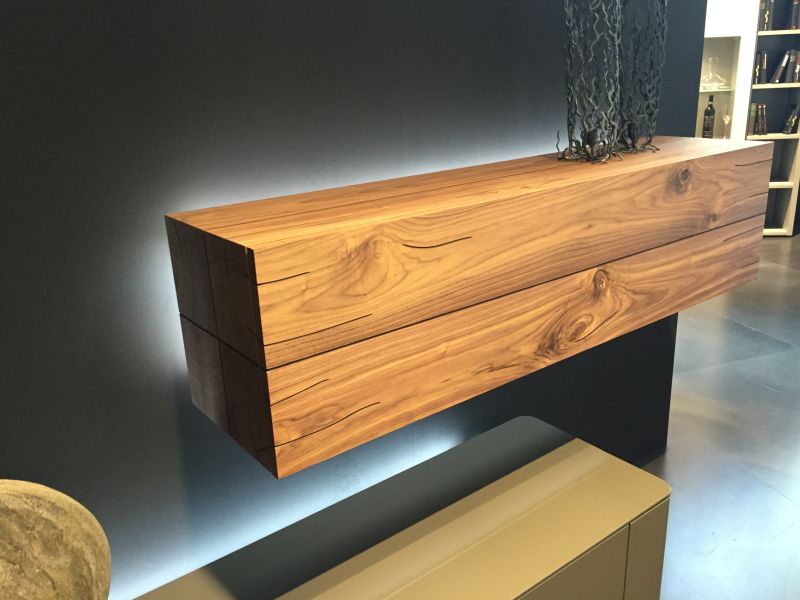
There are several benefits of putting LED light strips on wood, some of them are:
Enhanced Aesthetic Appeal
LED light strips can be used to enhance the look of a wooden surface, adding a modern and unique touch to any room in your home.
Accent lighting
LED light strips can be used to accentuate certain areas of a wooden surface, such as a bookshelf or a piece of artwork.
Under-Cabinet lighting
LED light strips can be installed under cabinets to add task lighting to a kitchen, providing additional illumination for food preparation and other tasks.
Outdoor Mood Lighting
LED light strips can be used to illuminate wooden decks, patios, and other outdoor spaces, providing a warm and inviting atmosphere.
Also read: How to Hang LED Strip Lights on Wall Without Adhesive?
Do’s and Don’t of Putting LED light strips on Wood
Mounting LED strip lights on wood surfaces such as doors, beds, desks, and cabinets are a popular choice among homeowners. However, before installing these lights on your wooden surfaces, it’s important to be aware of certain do’s and don’ts.
Use the Right Adhesive
When it comes to mounting LED strip lights on wooden surfaces, using the right adhesive is crucial. Using an adhesive that is not suitable for the intended use or environment, can lead to damage to the LED light strips or even the wooden surface.
It’s important to use an adhesive that is specifically designed for the intended use, whether it’s for indoor or outdoor use, to ensure the longevity of the LED strip lights on the wood surface.
Clean Your Wood Surfaces Before Mounting
It’s important to remember to clean your wood surfaces before installing LED strip lights, as failing to do so can lead to issues with the adhesive. Any dirt, debris, or pollutants on the surface can prevent the adhesive from sticking properly, which is why it’s essential to clean the surface thoroughly.
This can be done by wiping it down with a damp cloth or using rubbing alcohol to remove any excess chemicals. By taking the time to clean the wood surface, you can ensure a successful installation.
Don’t Mount On Rough Wooden Surfaces
Rough wooden surfaces are not at all suitable for mounting LED strip lights. If the surface has a lot of texture or is distressed, it can make it difficult for the adhesive to properly stick and may cause the lights to fall off.
In this case, it’s best to avoid mounting the lights on rough surfaces and instead wait until the wood surface is refinished and smooth before installing the LED strip lights.
Don’t Put LED Strip Lights on Wood That Has Been Coated In Paint
When mounting LED strip lights on wooden surfaces that have been coated with paint or stain, it’s crucial to clean the surface thoroughly before installation.
The residues left on the wood surface can cause the adhesive to fail, which is why it’s important to use rubbing alcohol to remove these residues.
Additionally, cleaning the surface with soap and water can also be beneficial as it removes any other debris and leaves a clean surface for installation as mentioned above. Remember to allow the surface to dry completely before mounting the LED strip lights.
Learn More: Do LED Strip Lights Get Hot On Wooden Surface?
How To Install LED Light Strips On Wood?
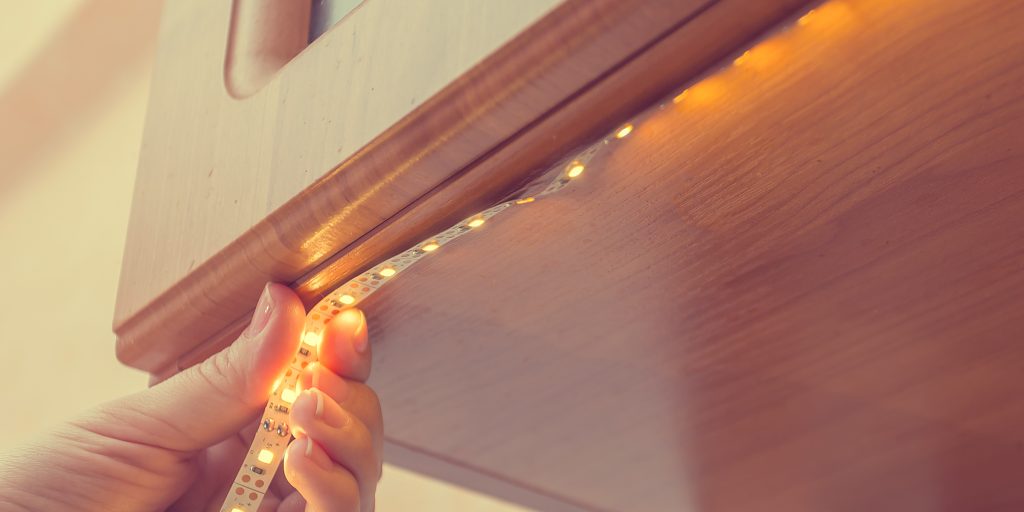
Follow the below process to mount LED strip lights on wood:
- Clean the wooden surface with a damp cloth and rubbing alcohol.
- Choose an adhesive that is suitable for wood, such as double-sided foam tape.
- Measure and mark out the area where the LED strip lights will be mounted.
- If you want to make drills, you can use a drill bit suitable for the type of wood surface to drill holes for the lights. (Here’s a video tutorial on how to drill wood)
- Carefully place the LED strip lights in the holes, ensuring they are facing the right direction
- Mark and drill holes for screws to secure the lights in place
- Use a screwdriver that is appropriate for the type of screws you’re using to secure the lights.
FAQs
Q: Is it safe to use LED strip lights on newly stained or painted wood?
A: It is recommended to wait until the paint or stain is fully dry and cured before installing LED strip lights, as fresh paint or stains can contain high levels of moisture that can damage the lights.
Q: What is the best adhesive for mounting LED strip lights on wood?
A: Double-sided foam tape is a suitable adhesive for mounting LED strip lights on wood. It’s easy to use, and you can simply apply moderate pressure to secure it.
Q: Can LED strip lights be mounted on unfinished wood?
A: It is not recommended to install LED strip lights on unfinished or engineered wood surfaces, as these types of woods are not suitable for the heat produced by LED lights and may not hold up well in the long run.
Also read: How to Remove LED Strip Light Without Damaging Paint
Final Words
In conclusion, applying LED light strips to wood surfaces can significantly enhance the aesthetic appeal and functionality of both residential and commercial spaces. Wood, with its natural warmth and elegance, provides an excellent backdrop for the sleek, modern look of LED strips. However, successful installation on wood requires careful consideration of both the type of wood and the adhesive used. It’s essential to ensure that the surface is smooth, clean, and free from any oils or finishes that might interfere with adhesion. Preparing the wood by sanding and cleaning it thoroughly will help in creating a strong bond between the LED strip’s adhesive backing and the wooden surface.
Furthermore, when installing LED strips on wood, it’s important to consider the heat generated by the LEDs. Although LED lights are cooler than traditional lighting options, they still produce heat that can affect sensitive surfaces like wood over time. Using LED strips with a lower heat output or installing a heat sink to dissipate the heat can prevent potential damage to both the LEDs and the wood. Additionally, integrating the lighting into a well-thought-out design can maximize both the visual impact and the practical use of the lights, such as under cabinets for task lighting or within wooden shelves for ambient lighting. By carefully planning the installation and considering the unique characteristics of wood, you can enjoy the benefits of LED strip lighting while preserving the beauty and integrity of your wooden surfaces.

